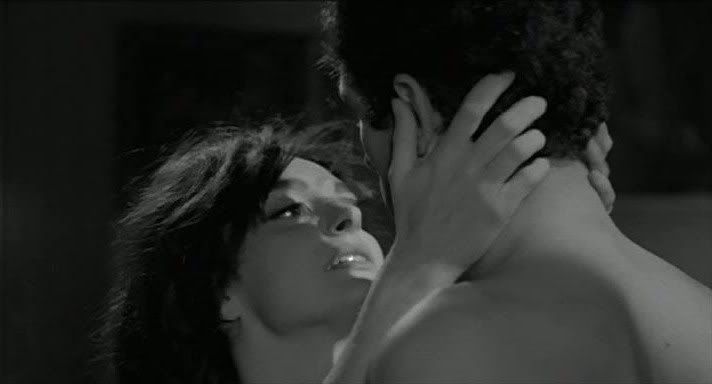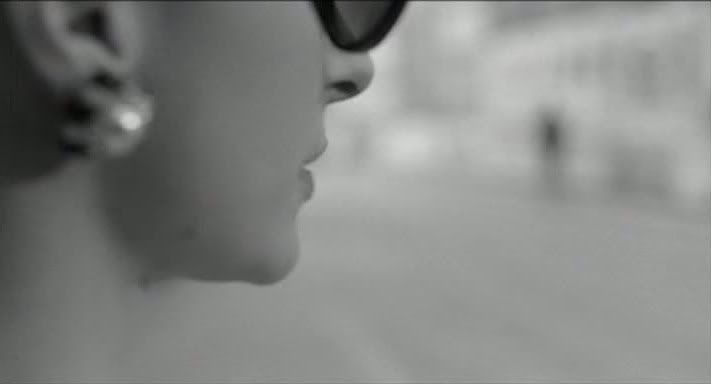
In his second film, Before the Revolution, Bernardo Bertolucci, infected with the enthusiastic cinephilia of the French New Wave, and obviously impressed by the films being made by his peers in France, leapt headfirst into the new cinema, adopting its style and concerns for his own, translating the style to a post-war Italy in a mood of uncertainty and instability. The film's characters are haunted by "fevers" of one kind or another, and the film itself is heady with the fever of moviemaking, the passion for images that capture, in their immediacy and vibrancy, the mood of an entire generation of cinema-hopping would-be revolutionaries. Fabrizio (Francesco Barilli) is a young man on the cusp of adulthood, unsure about where his life is headed, swept up in the idealism of Marxism. He joins the Communist Party, under the guidance of his teacher Cesare (Morando Morandini), but he remains aimless despite his newfound convictions, and when his friend Agostino (Allen Midgette) dies in a drowning accident that might be a suicide, he really comes unmoored. Over the course of a summer following his friend's funeral, he engages in a passionate but ultimately unhappy love affair with his visiting aunt, Gina (Adriana Asti), and in the process replaces his youthful idealism with a more "adult" attitude that might be called pragmatism or, less euphemistically, fatalism.
Bertolucci's film is very much of its time, in every way. It captures a precise and very important moment, not only in this young man's life, but in the history of Italy and Europe at large. Just as Fabrizio, poised on the verge of adulthood, could continue to engage with the world and with his strongly held ideals or retreat into bourgeois security and emptiness, the forked road ahead for Europe must have looked very similar at the time, in the years leading up to the peak of the student rebellions in May 1968. In retrospect, Bertolucci's film is "before the revolution" that would briefly sweep across the western world in the late 60s, and his pessimistic ending — a declaration that, for aimless young people like Fabrizio, it's always "before" a revolution that never comes — is a bleak but accurate prediction of the disappointments to come.
The film is of its time stylistically as well, in that it's drowning in style. Bertolucci was invigorated as a filmmaker by the French New Wave, and it shows in his jittery appropriations of their restless aesthetics. In one scene, early on, as Gina talks about death, Bertolucci uses zooms and pans the way Breathless deployed jump cuts, with seeming carelessness, a casual disregard for the rough edges, for what's left out. Gina theatrically plays with the camera, turning away from it and then abruptly thrusting back, widening her eyes at it like a melodramatic primadonna, and the camera's zig-zagging motion further discombobulates the composition. The camera is constantly zooming in, focusing momentarily on her eyes or mouth, then losing track of her as she moves away, briefly lingering off to the side, in the texture of her hair, before she bobs back into the frame. The effect is distracting more than invigorating, as Godard's early, jazzy innovations were, but maybe that's the point: it's style for its own sake, style divorced from content. The hyperactive gesticulations of the camera mirror the restlessness of the protagonist: in a later scene, as Fabrizio shifts nervously from one seat to another while trying to explain his discontent to Cesare, the camera pans drolly back and forth, as though amused by the young man's indecision, amused by his very bourgeois, entitled troubles.

At another point, Fabrizio goes to see Godard's A Woman Is A Woman, but he barely pays attention, and afterward is deaf to his friend's rhapsodic words on the film's style — ah, the friend says, realizing that his friend is in love, it's not a matter of style but of content. But is it? This friend parrots back many of the favored sayings of the Cahiers du cinema critics — morality is a matter of tracking shots, and tracking shots are a matter of morality — and rattles off lists of movies and directors ("you can't live without Rossellini," he shouts to Fabrizio as a parting shot) but he doesn't seem to have much to say about anything that he can't see in a theater. For him, Anna Karina will someday define his generation in the same way that Louise Brooks and Bogey/Bacall had defined earlier ones — a prescient prediction, that, but not one that does anything to help Fabrizio figure out just where his own life is heading.
Bertolucci at times seems to care more about his camera's meanderings than about the self-absorbed whining of his protagonists, or about the actors, who deliver fine, emotionally naked performances (especially Asti) into a vacuum of motivation and emotional grounding. Again, that's part of the point: these bourgeois dreamers, trying to break free, trying to live their own lives, hardly know why they're suffering or why they're feeling what they're feeling, and the film's jumpy, elliptical style breaks down their pointless love story until it feels as empty and silly as it is. It's all about style in search of some content.
Which doesn't mean that Bertolucci doesn't locate some genuinely affecting images within all this stylistic grandstanding. The scene where Fabrizio confronts Gina after she's been unfaithful to him is a case in point: Fabrizio walks away, disgusted, and Gina starts to follow him, walking away from the man she'd been with. She reaches a corner, stops, and in closeup looks toward Fabrizio, who's only an indistinct blur in the back of the frame, and then she looks back towards the other man, Bertolucci's camera panning to follow her gaze, finding another indistinct blur, another gray nothingness moving away from her. Quite literally, wherever she looks, she sees disconnection and emptiness, sees other people moving away from her until they seem to be swallowed up whole by the landscape. In another great sequence, early on, Agostino plays on his bike, drunk, and the camera gets drunk with him, wavering as the young man wheels by, standing on the bike's seat or putting his legs up over the handlebars, falling over again and again. The framing is lazy, drunken, often capturing an out-of-focus image of the young man wobbling by on the bike before he crashes to the ground, falling off camera, the image getting blotted out by some obstacle or another. It's a wonderfully offhand and playful encapsulation of this kind of aimless goofing around, capturing among other things the hint of homoerotic fascination that the watching Fabrizio nurses for his friend.

This is all Bertolucci's loving ode to his French contemporaries, to the cinema. Whatever the themes of Fabrizio's struggles with his political consciousness and his doomed love affair, the film is at least as much about the cinema as it is about anything that happens outside the frame, in the real world. Casual references to French filmmakers like Godard and Resnais abound, as do namedrops of the Hollywood auteurs, like Hawks and Hitchcock, so adored by Cahiers du cinema. There's a color sequence when Gina views Fabrizio through a camera obscura, and the resulting scene somehow simultaneously pays tribute to Hollywood technicolor and silent comedy. When Gina and Fabrizio make love for the first time, they self-consciously fall into the same pose, the same shadowy lighting scheme, as the similarly ill-fated couple at the beginning of Resnais' Hiroshima mon amour — another couple doomed by misunderstandings and miscommunications, by unbridgeable gaps dividing them from one another. By the end of the film, when Fabrizio vainly tries to find Gina within the shining white maze of an opera house, only to finally find her so they can talk past one another, the lovers seem to be reliving another Resnais film, trapped within the alienating façades of Last Night At Marienbad.
At times, this endless referentiality makes Before the Revolution seem like a cineaste's dream, a young man's film (Bertolucci was only 22 when he made it) about youthful fascinations with cinema and politics, youthful ambitions and desires, youthful introductions to love and disappointment. For all the verve of its style, the film is a dark vision; it's a film about idealism made by a young man obviously already tinged with his own streak of cynicism. The film's arc is relentlessly downward, as embodied in the treatment of Fabrizio's fiancée Clelia (Cristina Pariset) at the beginning and end of the film. In an early scene, Fabrizio goes to see Clelia for what he says is the last time: he just wants to look at her one last time before making a break with his bourgeois existence, and indeed she won't appear in the film again for most of its length. Fabrizio finds her in a church, with her mother, and Bertolucci films it like a holy moment: the actress is stunning, radiant in closeup, and she's chatting with her mother, smiling, while the soundtrack remains silent, the substance of her words unimportant in comparison to the stark beauty of that image, a beautiful woman who represents everything Fabrizio is leaving behind. Or everything he'd like to leave behind, because in the end he finds that he can't, and his fiancée returns, still with nothing to say, still just a smiling, flawlessly pretty symbol of a certain kind of life. Earlier in the film, that brief glimpse of her seemed vaguely spiritual and affecting, but upon her return she comes to represent staid bourgeois marriage and the abandonment of youth's ideals. This is a bleak ending, though not as bleak — or as darkly hysterical, or as emotionally shattering — as the film's very last shot, a freeze frame that implies that the whole cycle of youthful idealism and disillusionment is about to begin again.







0Awesome Comments!